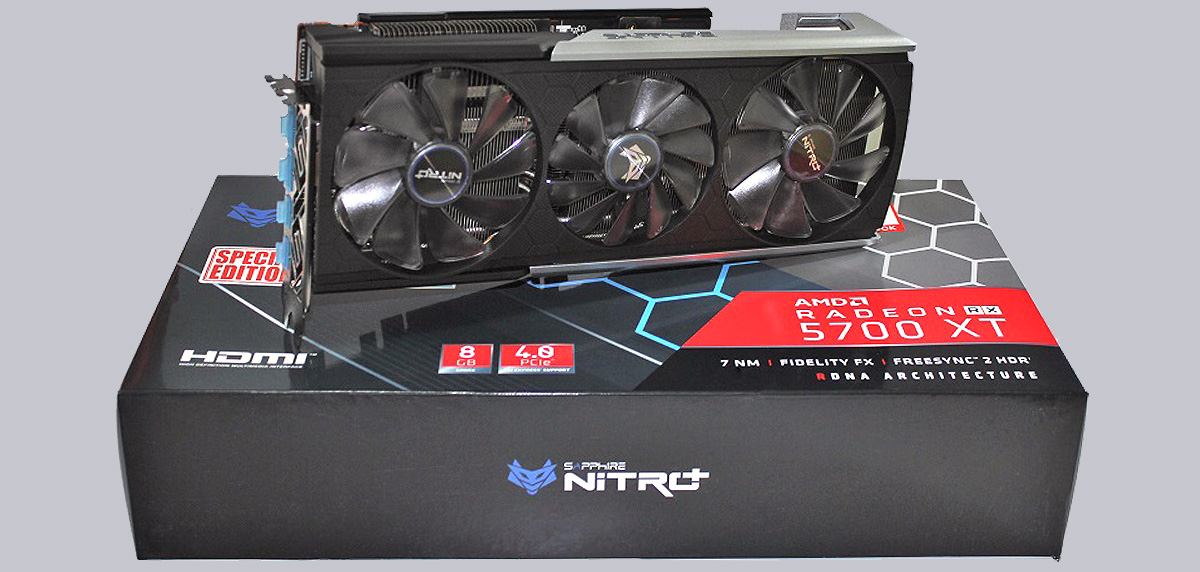

AMD and XFX use heavy all-metal designs, as have past Nitro+ versions. The cyberpunk-esque black-and-silver design looks similar to past iterations, but Sapphire changed quite a bit under the shroud-and the shroud itself.

The Nitro+ packs in the sort of hefty cooling performance that enthusiasts expect out of the brand. We’ll cover Trixx Boost in its own section after our standard benchmarks. It works surprisingly well in both performance uplift and visual fidelity. The feature leverages AMD’s excellent Radeon Image Sharpening ability by creating custom resolutions slightly below your monitor’s actual capabilities, then using RIS to clean up the image when it’s upscaled to fit your display. Trixx Boost debuted with last generation’s RDNA 1-based Nitro+ RX 5700 XT, and we instantly fell in love. More importantly, the new card also supports the fantastic Trixx Boost feature found in Sapphire’s Trixx utility, which also manages the card’s RGB lighting effects. This third position is actually the configuration the card ships in, set for the Performance BIOS. The Nitro+ also includes a rare third BIOS switch that lets you choose between the Performance and Quiet BIOSes using Sapphire’s Trixx software, eliminating the need to open your case to physically flip a hardware switch to change between the two.

You may prefer it, as the default Performance BIOS is slightly audible. Sapphire also offers a secondary Quiet BIOS that slightly reduces clock and fan speeds for improved acoustic performance. One BIOS, two BIOSes, thre BIOSes, ah ah ah AMD’s intelligent boost algorithms adjust based on your graphics card’s available power and thermal limits, so they all offer essentially the same real-world performance. Actual in-game clock speeds tend to go much higher for all of these cards. That’s slightly ahead of the XFX Merc 319’s default “Balanced” BIOS, though identical to the XFX card’s “Rage” BIOS. The default Performance BIOS is rated for a 2,110MHz average Game Clock speed (+95MHz over reference) and a 2,360MHz maximum Boost speed (+110MHz over reference). Sapphire juiced the clocks on the Nitro+. Also, its innovative on-die “Infinity Cache” enhances memory performance beyond what the 16GB of onboard GDDR6 memory can normally do, leading to increased frame rates at all resolutions.Īs for the Radeon RX 6800 XT itself, here’s an AMD-supplied look at its stock specifications, compared with the step-down $580 Radeon RX 6800 and last generation’s RDNA 1 “flagship,” the midrange $400 Radeon RX 5700 XT: AMD RDNA 2 includes dedicated hardware for real-time ray tracing. The Nitro+ is powered by AMD’s cutting-edge graphics architecture, RDNA 2, which we covered extensively in our RDNA 2 deep-dive. Sapphire Nitro+ Radeon RX 6800 XT specs, features, and design Brad Chacos/IDG


 0 kommentar(er)
0 kommentar(er)
